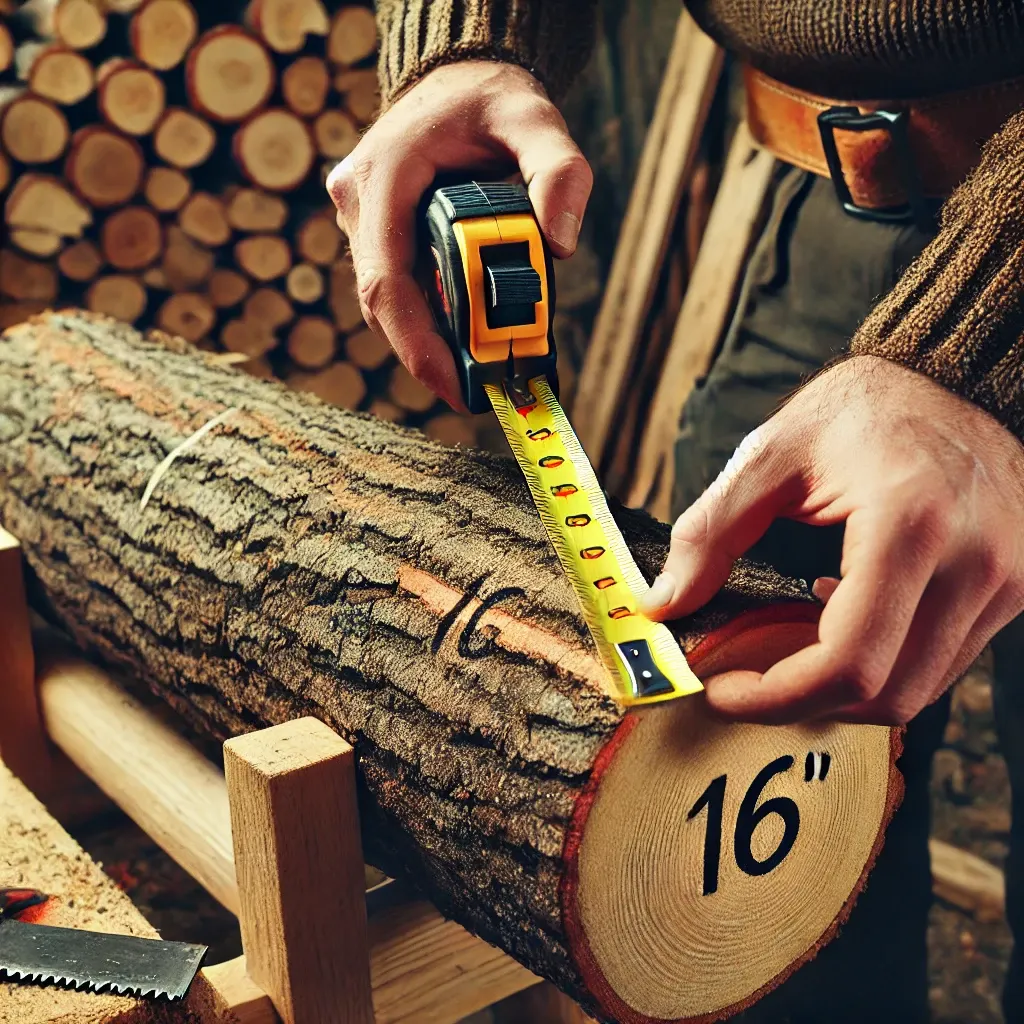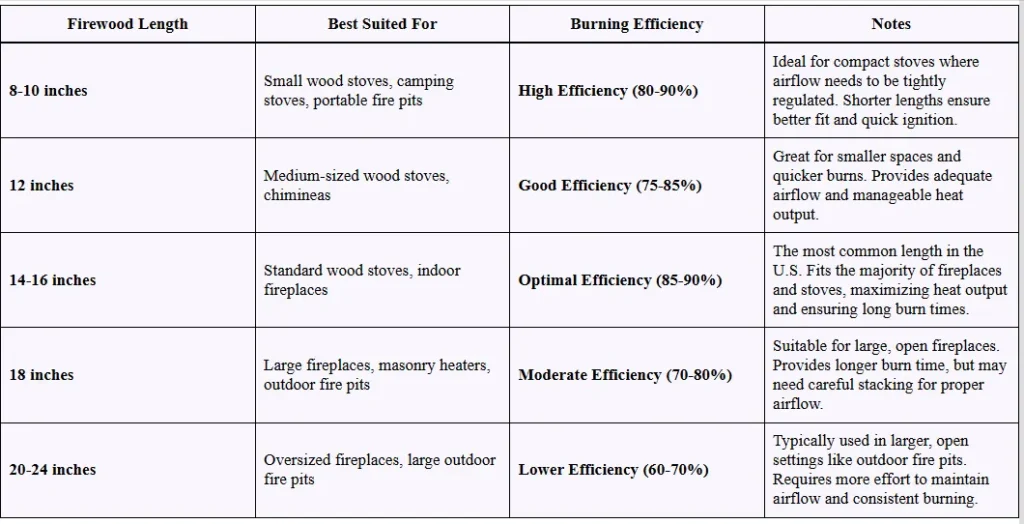When I first started cutting firewood for my fireplace, I didn’t realize how much the length of each log impacted the burn time and heat output. Most fireplaces and wood stoves work best with firewood cut to around 16 inches in length. In fact, using firewood that’s too long can reduce efficiency by as much as 25%, meaning you’re wasting both time and energy.
The right firewood length ensures that your logs burn evenly, providing consistent heat without overloading your stove or fireplace.
Let me share what I’ve learned about finding the perfect firewood length for maximum efficiency.
Table of Contents
ToggleWhat is the Standard Firewood Length?
According to the U.S. Forest Service, cutting firewood to the standard length of about 16 inches can improve burn efficiency by up to 30%.
The ideal firewood length depends on the size of your fireplace or wood stove, but a standard length for most setups is around 16 inches. This size works well for the majority of stoves and fireplaces because it allows for proper airflow and efficient burning.
According to the U.S. Forest Service, cutting firewood to the right length can improve burn efficiency by up to 30%, meaning you’ll get more heat from less wood.
For smaller wood stoves or outdoor fire pits, you may want to go with logs as short as 12 inches to fit comfortably without overcrowding the firebox.


















Ultimately, the ideal length is one that fits easily into your firebox while allowing for good airflow and minimal waste.

Firewood Length Chart
| Firewood Length | Best Suited For | Burning Efficiency | Notes |
|---|---|---|---|
| 8-10 inches | Small wood stoves, camping stoves, portable fire pits | High Efficiency (80-90%) | Ideal for compact stoves where airflow needs to be tightly regulated. Shorter lengths ensure better fit and quick ignition. |
| 12 inches | Medium-sized wood stoves, chimineas | Good Efficiency (75-85%) | Great for smaller spaces and quicker burns. Provides adequate airflow and manageable heat output. |
| 14-16 inches | Standard wood stoves, indoor fireplaces | Optimal Efficiency (85-90%) | The most common length in the U.S. Fits the majority of fireplaces and stoves, maximizing heat output and ensuring long burn times. |
| 18 inches | Large fireplaces, masonry heaters, outdoor fire pits | Moderate Efficiency (70-80%) | Suitable for large, open fireplaces. Provides longer burn time, but may need careful stacking for proper airflow. |
| 20-24 inches | Oversized fireplaces, large outdoor fire pits | Lower Efficiency (60-70%) | Typically used in larger, open settings like outdoor fire pits. Requires more effort to maintain airflow and consistent burning. |
How to Measure and Cut Firewood for Efficient Burning?
Measuring and cutting firewood for efficient burning starts with knowing the size of your fireplace or wood stove. Most standard fireplaces work best with firewood that is about 16 inches long.
To get the most out of your wood, you’ll want to make sure your logs are cut evenly and split properly for maximum airflow during burning.
Measure Your Firebox
First, measure the width of your firebox. If it’s 18 inches wide, aim for wood lengths that are 14-16 inches so there’s room for proper airflow.
According to the U.S. Department of Energy, improper firewood sizing can decrease efficiency by up to 25%.
Mark Your Log Lengths
Use a tape measure and chalk or a marker to mark your logs before cutting. A great example is splitting a fallen tree.
If you’re cutting a 12-foot log, you can mark it every 16 inches to get the optimal firewood length.

Use the Right Tools
Best Chainsaws for larger logs, but if you’re just trimming smaller pieces, a handsaw can do the trick.
Use a chainsaw with a guide to ensure uniform cuts, and it’s made splitting firewood much easier and faster.






Splitting for Better Burning
Once the logs are cut, they need to be split. Splitting the wood allows for better airflow in the firebox, which leads to a hotter, more efficient burn.
For instance, split wood with a moisture content of 20% or less burns much better than whole logs, according to research from the University of Nebraska.

Affiliate Disclosure: Fireplaceadviser.com is a participant in the Amazon Services LLC Associates Program. We may earn a commission when you click on certain links on this site and purchase.

Hello!! I am Jamal Khan. I often fix my home electric heaters and gas stove problems and research the common issues in the heating units to improve my knowledge and expertise. The aim of establishing fireplaceadviser.com is to share my expertise and knowledge with my audience.






